Dressage: How 'horse dancing' evolved from ancient, deadly beginnings to modern Olympic glory
There can be no short cuts to success in dressage. The Ancient Greeks’ sympathetic methods of training horses, which were all about survival in battle, should still hold good in today’s widespread embrace of the Olympic sport, as Pippa Cuckson explains.

Next time you pass the magnificent equestrian statue of Marcus Aurelius on Rome’s Capitoline Hill, take a closer look. The Emperor is showing a dressage movement. And every time you neatly manoeuvre your hunter or hack around a tight gateway, so do you.
Dressage is all around, although few would dream of comparing their expertise with that of dual Olympic champion and national treasure Charlotte Dujardin.
The original French – dressur – simply means ‘training’ and, as we approach the quadrennial World Equestrian Games in Tryon, USA, in September, the links between the ancient world and Britain’s emergence as a competitive dressage super-power have more resonance than you might think.
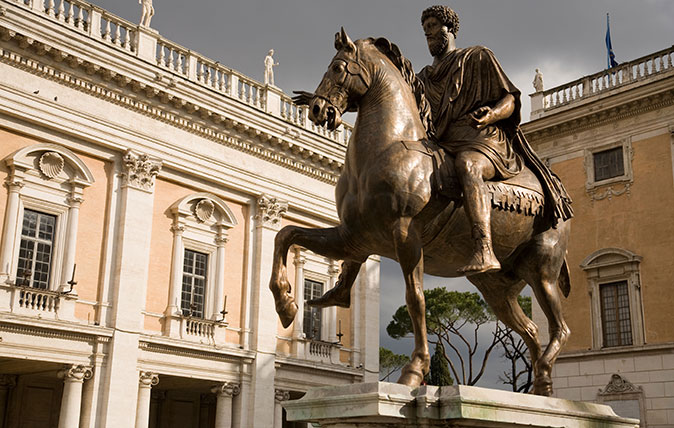
Ancient beginnings
Prehistoric man valued his horses highly, or so we deduce from cave drawings, but it was only 2,000 years ago that the Ancient Greeks twigged that they would be more likely to survive in battle through developing trust and two-way communication with their steeds; until then, the silent partner was tormented by brutal bits and spurs.
The horse’s ability to jink, on command, from side to side, gallop from a standing start or turn on a drachma became vital. Enlightened Greeks taught these skills using patience, repetition and reward. They worked out how horse and rider could use themselves more effectively through small shifts in body weight and balance and with a fairly light rein contact – all of which is still the ideal. The system was recorded by Xenophon (430–354bc), a philosopher and student of Socrates, in his remarkable work On Horsemanship.
Much of what Xenophon wrote remains superb practical advice to this day – here are some excerpts:
- ‘The one great precept in using a horse is this: never deal with him when you are in a fit of passion… so often we rue the day we gave way to it’
- ‘When your horse shies at an object, he should be shown there is nothing fearful in it; if this fails, touch the object yourself that seems so dreadful, and lead him up to it with gentleness. Compulsion and blows inspire only more fear’
- ‘Refrain from pulling at [the horse’s] mouth… most people think this makes him look fine; but they only produce an effect exactly contrary; they positively blind their horses by jerking the mouth up instead of letting them look forward, and by spurring and striking scare them into disorder and danger’
Renaissance dressage
With the disintegration of ancient Greece, the enlightened teaching of riding again sank without trace. It was revived, unsurprisingly, during the Renaissance, with the establishment across Europe of centres of excellence linked to the military, the most famous of which is the Spanish Riding School of Vienna, founded in 1565.
Exquisite houses, the beauty of Nature, and how to get the most from your life, straight to your inbox.
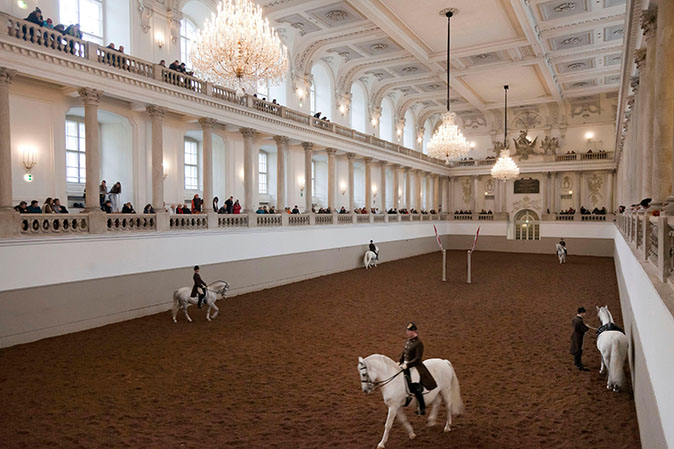
These schools refined and defined ‘classical’ dressage moves – the highly ‘collected’ paces that, then as now, demonstrate weight transference to the hindquarters and ‘lifting’ of the forehand (the front of the horse). The more compact body shapes of the Lipizzaner, Andalusian and Lusitano breeds were best suited to this haute école work.
The movements in modern dressage
Movements included in today’s dressage tests include:
- the half-pass, a semi-sideways, forward movement performed in trot and canter
- pirouette
- piaffe, repeated steps on the spot
- passage, a slow, ‘floaty’ trot
The ‘airs’ that used to be part of dressage – with the intention of killing in battle
Though they haven’t found their way into modern discipline, dressage once included the ‘airs above the ground’ that, according to oral tradition, were used in combat before gunpowder changed cavalry tactics.
The levade, a balance on the hindlegs, is the epitome of ‘collection’; in the dramatic capriole, the horse leaps vertically and kicks out – lethal if he hits the target.
For all that deadly potential, the airs were most likely a gymnastic exercise to develop reflex and ability. In fact, there is scant evidence that they were ever applied in the battlefield either, nor even in portraits of historic figures.
Such movements would take too long to perfect in an expendable war horse and, with the levade presenting his belly to enemy foot soldiers, the horse would have become a standing duck.
Today, only stallions with rare aptitude are taught the ‘airs’ for public performance in Vienna, the Cadre Noir in Saumur, France, and the Royal Andalusian School of Equestrian Art in Jerez de la Frontera, Spain.
The 17th century Englishman who might have pioneered British dressage, but for wars and debts
William Cavendish, 1st Duke of Newcastle, taught riding to the future Charles II, but fled during the Civil War, founding his own haute école academy in Antwerp in about 1650. He wrote about sympathetic training in Méthode et invention nouvelle de dresser les chevaux, one of the tiny handful of textbooks written since Xenophon. The first, by Federico Grisone in 1550, was deemed cruel, even by contemporaries.
Cavendish returned to England upon the Restoration, but with enormous debts and renewed duties in the royal household, he didn’t set up a similar riding academy here, although he did build the magnificent Riding House at his home, Bolsover Castle in Derbyshire, where he continued to train horses. Had he opened a school there, how different might things have been? Serious interest in dressage took a very long time indeed to gestate in Britain.
Competitive dressage in Britain
Dressage became an Olympic sport in 1912, but exactly when it migrated from parade-ground drill to organised competition isn’t recorded; the modern-day 60m by 20m (197ft by 66ft) dressage arena is assumed to derive from the space usually available between German cavalry barracks.
Olympic horse sport was limited to military personnel until 1952 and, even when it was opened to civilians, Britain’s foxhunting and racing heritage steered our riders towards eventing and showjumping, not the ‘circles and bumps’ that held such a strong, unfathomable appeal across the Channel.
Britain’s Lorna Johnstone made global headlines for competing in the dressage at the Munich Olympics in 1972 when she was 70, but, sadly, this also reinforced perceptions that dressage wasn’t a young person’s sport.

Breakthroughs came and went: Jennie Loriston-Clarke’s world bronze medal in 1978, Christopher Bartle’s sixth place at the Los Angeles Olympics in 1984 (he was to hold the British Olympic record for the next 28 years). David Hunt is still the only British winner of all three grands prix at a single major international – Rotterdam in 1988 on Maple Zenith – but he missed the Olympics due to the then ban on ‘professional’ athletes.
Britain’s lack of dressage horses
Another factor was lack of homegrown horsepower, as the British Thoroughbred is primarily bred to run and jump. By the 1960s, Northern Europe was light years ahead in the breeding of ‘warmblood’ dressage horses that showed extravagant paces, power and presence.
Maple Zenith was bred at the Maple Stud, founded by the Hon Janet Kidd. Her daughter, Jane Kidd, Mrs Loriston-Clarke and others worked tirelessly to persuade the British horse community to breed its own sport horses, even if it meant using Continental foundation stock.
Today, unfortunately, we have an even smaller appetite for long-term breeding gambles. Gifted riders such as British team captain Carl Hester import young horses in the raw and train them up; others may spend six- or seven-figure sums on the finished article. Our epoch-making Olympic gold medal trio of horses from 2012, Valegro, Uthopia and Mistral Højris, were all bred on the Continent.
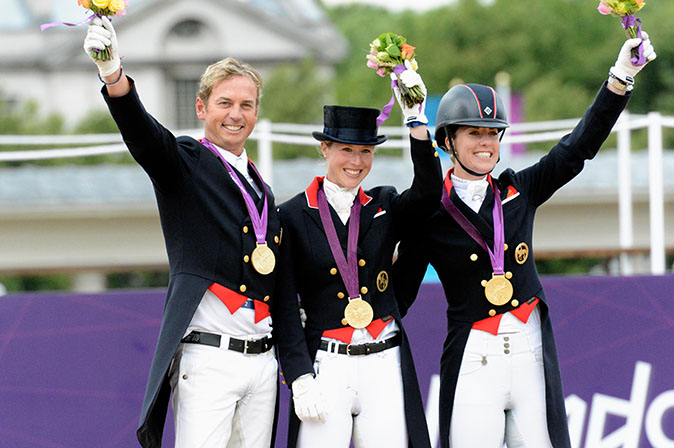
Equally, the Iberian breeds beloved of the classical schools became disadvantaged by competitive dressage, which requires horses to set sail across the arena in ‘extended’ paces. The Andalusian Fuego XII, ridden by Juan Munoz Diaz for Spain, was the last Baroque horse to score highly at Olympic level, in 10th place in 2012.
Britain’s Olympic success resulted from the rare coming together of a small pool of overwhelmingly talented riders and horses, enabled by Mr Hester’s selfless decision to hand his own stable star Valegro to his pupil, Miss Dujardin, after talent-spotting the young rider.
How hyperflexion gave way to ‘horse dancing’
Britain’s belated emergence actually provided an antidote to the faux and increasingly controversial training technique called hyperflexion, its flaws exposed in Greenwich Park by the lighter, more naturally progressive teachings of Mr Hester and his followers. When the media and wider public swooned over Valegro’s joyful ‘horse dancing’, they didn’t know how apt their new name actually was.
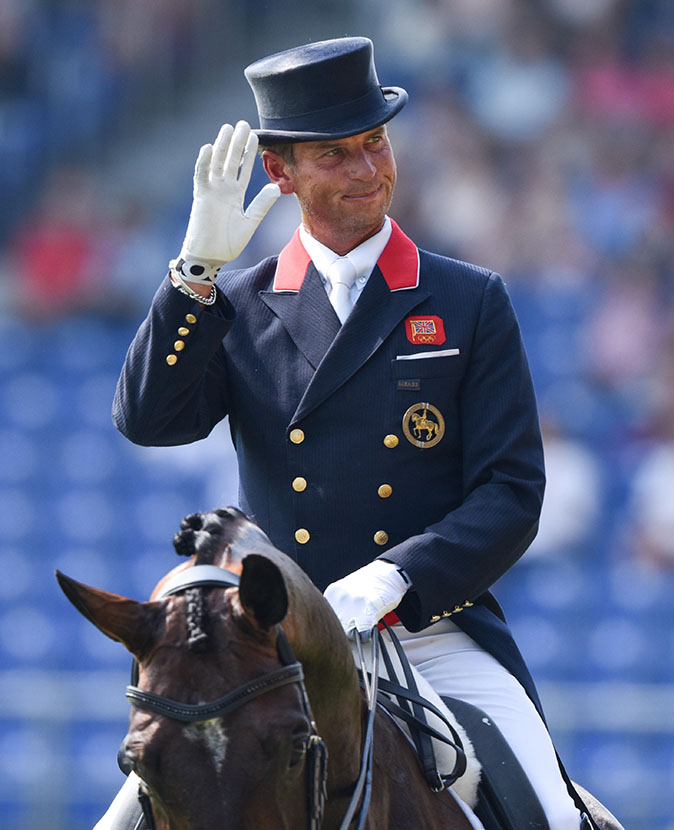
For 20 years, parts of Northern Europe actively promoted hyperflexion to create the preferred outline by riding the horse for prolonged spells with its head forced back into the chest, the theory being that this stretches muscles and elevates the back (critics prefer the abrasive-sounding German label Rollkur).
The Netherlands’ Anky van Grunsven won three Olympic titles (in 2000, 2004 and 2008), displacing Germany from its postwar domination, in this way. The Fédération Equestre Internationale eventually barred Rollkur; however, social media remains swamped with photos of alleged illicit use in the warm-up ring.

This article was originally published in 2018
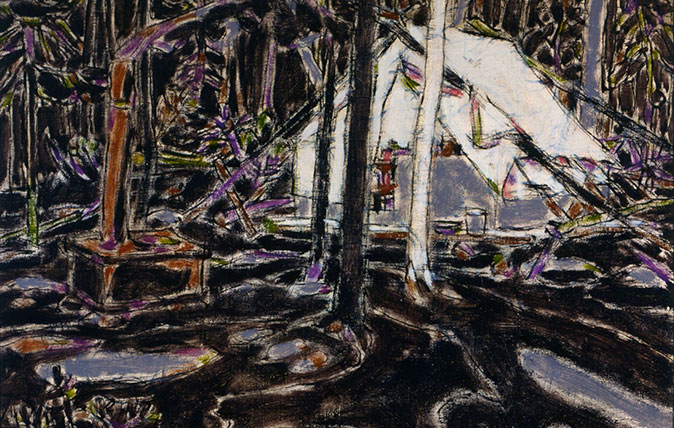
Credit: David Milne, Tent in Temagami, 1929, Collection of the Tom Thomson Art Gallery, Owen Sound, Ontario, bequest from the Douglas M. Duncan Collection, 1970. © The Estate of David Milne
In Focus: The Canadian hermit's work that is a dystopian alternative to Monet
Canadian artist David Milne moved from city to country, eventually ending up as a hermit in a remote part of

Dog Tales: How Crumble became a Country Life frontispiece, found a husband and had five puppies
A brilliant lonely (dog) hearts ad for Crumble was shared by us at Country Life – and ended up sparking